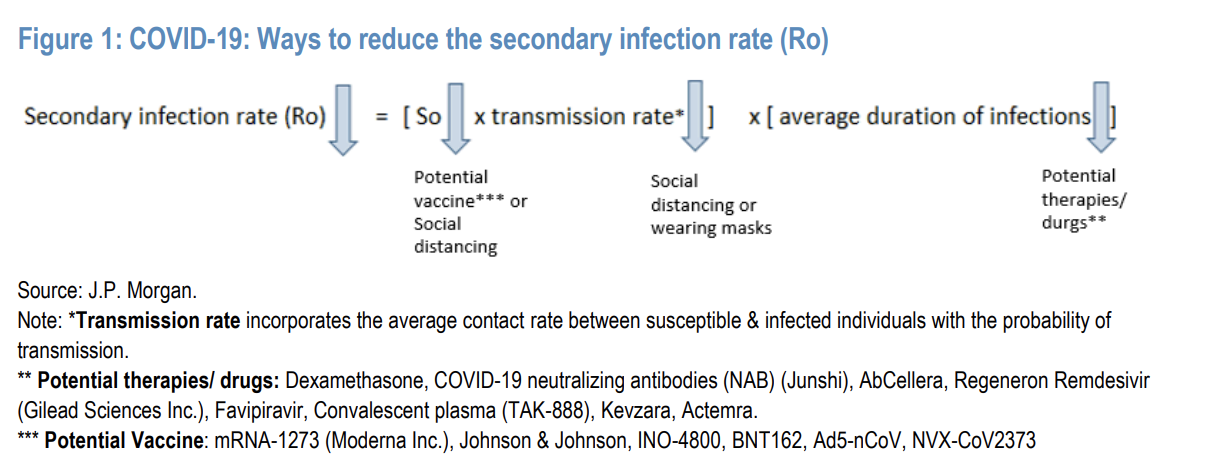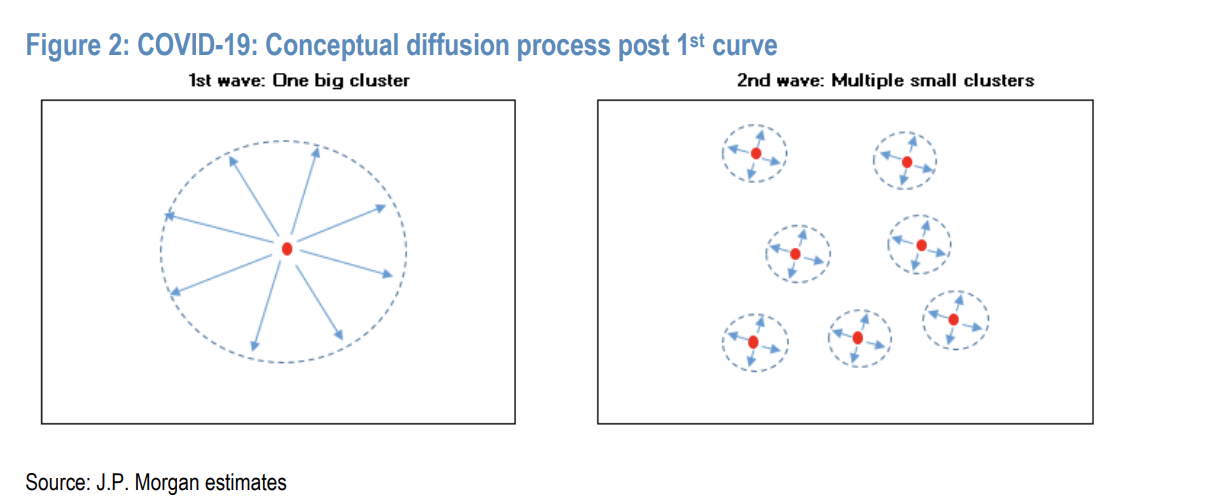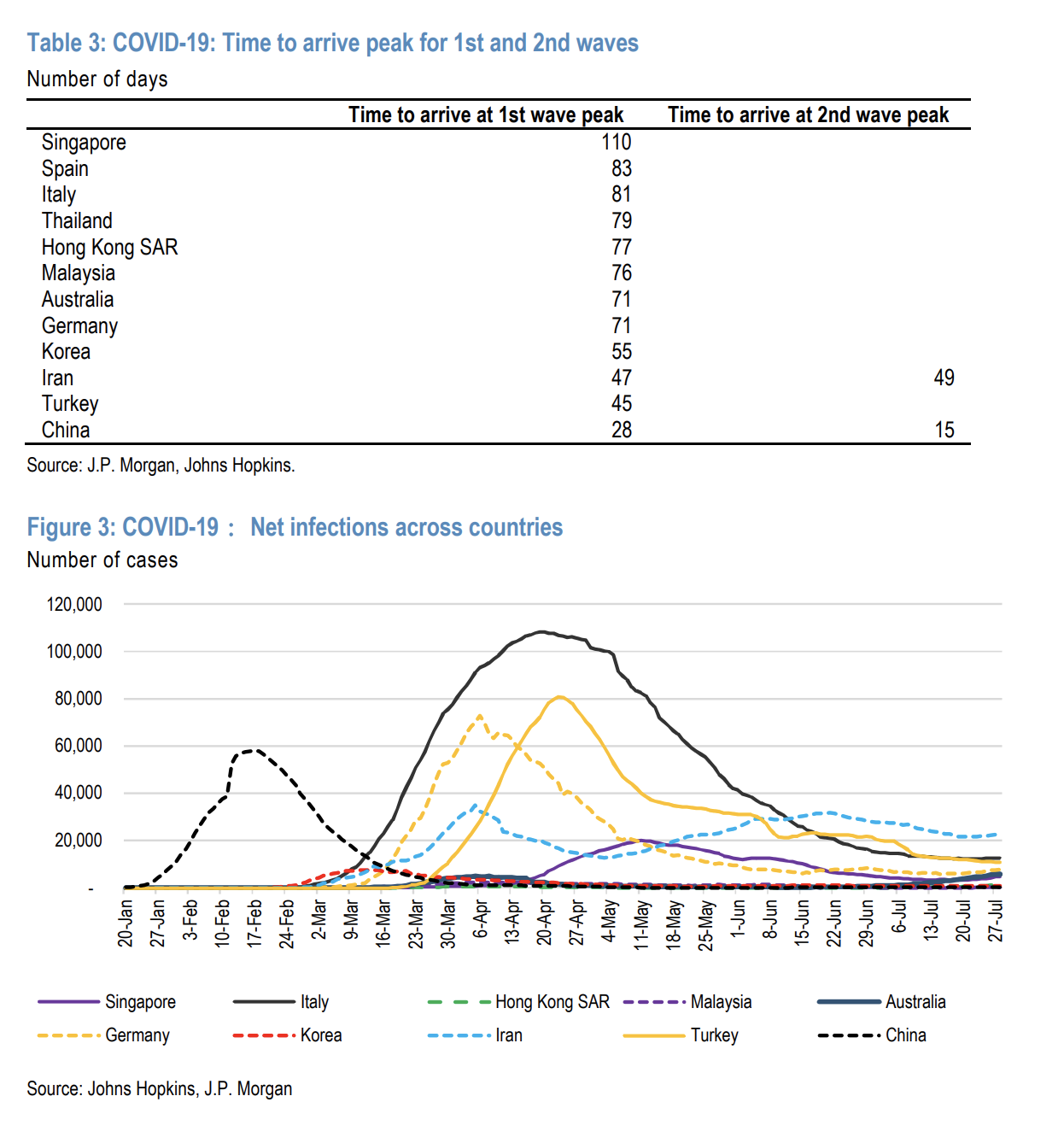JPM Explains Why A Return To Lockdowns Isn’t A Smart Strategy For Suppressing COVID-19’s “Second Wave”
Tyler Durden
Sun, 08/02/2020 – 16:35
A team of macro analysts from JP Morgan’s sell-side research desk published a lengthy paper aggregating all of their COVID-19-related findings. And while perusing the note, one particular finding caught our eye. In one section of the note, the team addressed a critical question for epidemiologists (and investors): Will the amount of time required to reach “peak” infection rates vary between successive “waves” of the virus? And if so, how might this inform the global policy response?
Succeeding in compressing the “half life” of the wave should be the central focus of policy makers, the analysts argued. And while globally, the policy response in country after country has favored lockdowns, Melbourne is showing right now that, especially when case numbers are small relative to the overall population, lockdowns might not make sense as the most effective way to contain the virus.
As the infection curve starts to resurge in many countries, signaling the next wave, we examine whether the time to arrive at the peak is similar in both the first and second waves. Conceptually, we develop a hypothesis on shorter potential lifespan for the infection curve as the curve moves into the next waves.
In our view, the concept of decay in ‘half-life’, i.e. the time required for a quantity to reduce to half, could be applicable to picturing the next waves.
We think (1) better secondary infection rate control, (2) large mobility tracing and more voluntary testing; and, (3) shorter recovery periods could drive a shorter curve peak.
It is not necessarily so that if more people are infected, a larger part of society would have antibodies and that this would flatten the curve. We note that, in most countries – both developed and developing – the size of infection is only 0.2-0.5% of the total population.
Even if we were to assume about 5x higher unreported infection cases, this is still relatively small. Also, “ring vaccination” is not a strategy yet, as so far we do not have a vaccine widely available for the public.
Over the coming 6-12 months, JPM analysts concluded, it’s likely that a number of factors resulting from lessons learned during the first wave will commingle to help shorten the trough-to-peak dynamic in the ensuing waves.
For the record, this is how the team calculates “secondary infection rate” =, or “R sub zero”, their preferred means of measuring the rate of viral spread.
Here are JPM’s reasons for believing that R-sub-zero will be more restrained during upcoming waves, including the second and third waves that appear to be rising in Asia and Europe at present.
Sample size (So): Declining. This is due to the large scale of tests conducted and the government push for identification of COVID-19 at an early stage.
Also, the technology tracking infections seems to suggest that the size of susceptible population is smaller than in the last couple of months.
Transmission rate: Rising. Mandatory guidance on wearing a mask in public places seems to be working as the key factor to control the rate of transmission. That said, we believe this is not enough to offset rising human mobility. After reopening, the transmission rate is likely to rise, as social distancing measures are relaxed, human mobility increases, and there is the risk of airborne transmission.
Average duration of recovery: Shortening. As the government ramps up the medical resources and gains more experience in treating the infections, the average duration of recovery is shortening.
All of this suggests that since we likely won’t be able to entirely suppress the virus without a vaccine, the world needs to rethink its approach to keeping cases at bay, and try to find a happy medium that will allow the economy to function as well as possible.
Another important difference between the first wave and the emerging second wave that researchers have observed is the fact that the second wave appears to arrive in smaller, more isolated clusters centered around a particular point of vulnerability (like the house parties in New Jersey and Connecticut).
How does the JPM analysts’ theory hold up against our current research? Admittedly, there’s not a ton of data on there about the onset of second waves. What exists suggests that the theory could very prove reliable. Though, presumably if not enough is done, it also might prove a failure.
Bottom line: Governments need to recognize that small levels of COVID-19 infection will likely need to be tolerated, and attended to with more sustainable measures, like mandatory social distancing, remote or distanced learning and other techniques. Perhaps Sweden’s approach will emerge as an example. Perhaps not.
To minimize damage to the economy will maximizing survival rates and minimizing mortality, governments should build a consensus on the ‘no riskfree’ next step in society (i.e., that the public should accept that a certain number of confirmed cases may exist in society until a vaccine becomes widely available) and that we will all need to do our part to contain the spread once the economy begins to reopen. But moving forward with more lockdowns probably isn’t a reliable solution.
In many countries, like India, it’s simply not an option.
![]()
Zero Hedge’s mission is to widen the scope of financial, economic and political information available to the professional investing public, to skeptically examine and, where necessary, attack the flaccid institution that financial journalism has become, to liberate oppressed knowledge, to provide analysis uninhibited by political constraint and to facilitate information’s unending quest for freedom. Visit https://www.zerohedge.com


